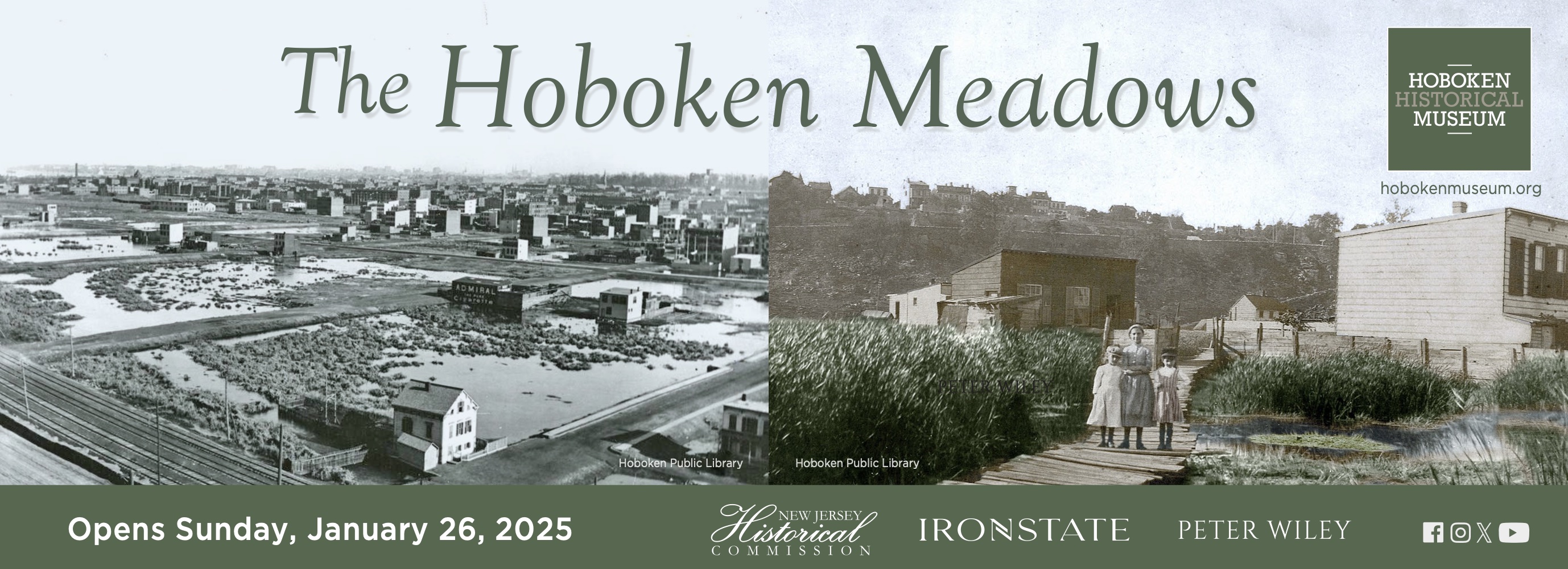Current Exhibitions – Main Gallery
The Hoboken Meadows

This groundbreaking exhibit uncovers the fascinating history of the western portion of Hoboken, once a sprawling salt marsh known as The Meadows. Through maps, botanist sketches, photos, paintings, newspaper articles, and oral histories, we’ll take you on a journey from the early 1800s to the present day.
Discover how the Meadows, once teeming with plant life and wildlife and admired by Hudson River School painters and naturalists like John James Audubon, transformed over time. From the challenges faced by early settlers to the rise of industry and public housing, and even the lessons learned after Superstorm Sandy, “The Hoboken Meadows” reveals how this unique region has shaped — and been shaped by — Hoboken’s evolution.
Learn more about Hoboken's resiliency parks:
-
ResilienCity Park (formerly Northwest Resiliency Park)
We’d like to extend a special thank you to the New Jersey Historical Commission, Ironstate, and Peter Wiley for their generous support in bringing this exhibit to life.
